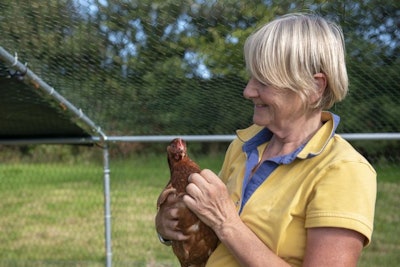
H5N8 highly pathogenic avian influenza (HPAI) virus of avian origin has been detected for the first time in people, reports The Moscow Times.
Seven workers at a poultry farm in southern Russia tested positive for this virus variant. They are now recovering, having suffered no serious health consequences.
For the first time, the H5N8 variant appears to have gained the ability to infect people, according to Anna Popova, head of the federal service for consumer protection and welfare, Rospotrebnadzor.
“The discovery of these mutations when the virus has not still acquired an ability to transmit from human to human gives us all — the entire world — time to prepare for possible mutations and react in an adequate and timely fashion,” she said.
According to the same source, HPAI H5N8 had been detected in poultry at the farm in December.
Transmission of the virus was studied at the Vektor State Virology and Biotechnology Center in Siberia. It is now developing a test kit to identify this virus in humans and a vaccine.
Meanwhile, the International Poultry Council stressed that poultry meat is still safe to eat and that based upon scientific understanding of avian influenza, chicken and other poultry products are safe to eat if cooked properly, according to the United Nations Food and Agriculture Organization (FAO) and the World Health Organization (WHO). No birds from flocks with the disease should enter the food chain, they note, and consumers can remain confident in the safety of poultry meat and in the efforts of the poultry industry to guarantee safety and security for its customers.
Most recent HPAI outbreak in Russian poultry was officially reported at the end of last month. Affected was a farm with around 100,000 turkeys in the Southern federal district.
No virus mutations detected in France
Since the first HPAI cases linked to an H5N8 virus variant were detected in poultry the south-west of France in December, more than 446 outbreaks have been confirmed.
Over 130 complete viral genetic sequences have been carried out, according to the agriculture ministry. None has shown characteristics that indicate a risk of transmission to humans. However, several health agencies in France will be working together on a risk assessment for this possibility.
In response to the development in Russia, Germany’s federal agriculture ministry has warned the nation to take additional care, and to report but not handle any sick or dead wild birds.
Avian flu situation in France continues to improve
The latest information from the agriculture ministry (as of February 22) puts the number of confirmed HPAI outbreaks since November of last year at 467.
This is just one more than the previous week. An outbreak has occurred in Gers, where the total now stands at 47.
Gers is located in the southwest of France, where 454 HPAI outbreak have been confirmed. Worst-affected departments are in this region — Landes (341 outbreaks), and Pyrenees-Atlantiques (56).
There have been a further 13 outbreaks in poultry in other regions of France, and HPAI virus has been detected in 13 wild birds at various locations across the country.
Confirmation of just one new outbreak gives additional support to the agriculture minister’s assessment last week that the HPAI situation in France is beginning to ease. This followed the depopulation of 739 poultry premises, and culling of more than three million poultry, including around 2.45 million ducks.
Further outbreaks reported in Germany, Poland, Sweden
Over the past week, Poland’s chief veterinary office has reported three additional outbreaks of HPAI in poultry. They bring the country’s total so far this year to 24, and include the first cases in the southern province of Silesia (Slaskie).
The HPAI virus was detected at a commercial farm with around 21,780 fattening turkeys in the Tarnogorski district of Silesia. The other premises to be affected were non-commercial flocks — one with 160 laying hens in Greater Poland (Wielkopolskie), and a small mixed flock in Lubusz.
So far this year (to February 16), 13 wild birds have tested positive for the H5N8 HPAI virus, according to the same source.
Latest data from the German agriculture ministry put the number of registered HPAI outbreaks so far in poultry at 65. There have also been 625 cases in wild birds.
Over the past week, the national veterinary reference laboratory, Friedrich-Loeffler Institute has reported the detection of HPAI virus in more poultry. These include chickens and turkeys in Mecklenburg-West Pomerania, as well as ducks and turkeys in Brandenburg. Previously, both states have recorded multiple HPAI outbreaks in poultry.
Over the past week, one additional outbreak of HPAI has been confirmed in Sweden.
This affected a flock of 3,500 fattening turkeys in Simrishamn, according to the European Reference Lab for avian influenza, IZSVe. Presence of the H5N8 virus variant has been confirmed. This municipality is in the county of Skåne in southern Sweden, where previous outbreaks have been reported.
View our continuing coverage of the global avian influenza situation.















